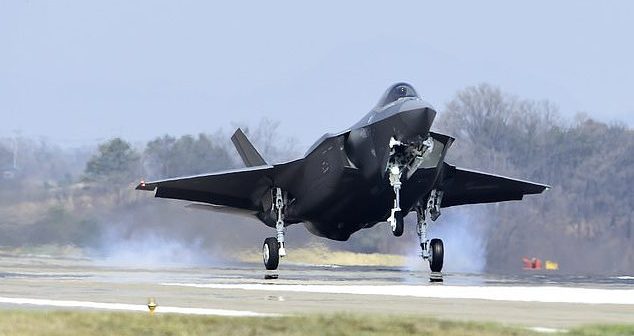South Korean stealth fighter makes emergency ‘belly landing’

According to experts, the “belly landing” — touching down with landing gear retracted — was an unprecedented event for the $100 million US-designed stealth fighter now in use or on order by more than a dozen countries.
You might like
CDC warns off tourists from popular Caribbean island getaway
Analysis: What Hannity’s unveiled texts reveal about him and how Trump viewed his advice
Gal Gadot says controversial ‘Imagine’ video was in ‘poor taste’
Facing criticism, CDC updates isolation recommendations with guidance on testing
“The jet did an emergency landing as the landing gear did not extend. This would mean the jet did the ‘belly landing,'” said a South Korean military official, who would not confirm whether the aircraft suffered any damage in the incident.Even if it did, it would demonstrate superb flying skills by the pilot, whom officials said walked away from the landing, according to a South Korean military official.”A gear-up landing on the F-35 may be quite difficult and dangerous because of the angle of attack the aircraft has on approach to touchdown,” said David Cenciotti, a former Italian air force officer and editor of Versions of the F-35 are also flown by the US Air Force, Navy and Marine Corps as well as US allies and partners including Japan, the United Kingdom, Australia, Italy, Norway, the Netherlands and Israel. More countries have orders in for the jet.Tuesday’s accident is the first for a South Korean F-35, but the jets have been involved in at least eight other incidents, according to records kept by crowdsourced website F-16.net.The most recent of those was the loss of a British F-35, which crashed into the Mediterranean Sea off the aircraft carrier HMS Queen Elizabeth in November. The pilot ejected safely from that plane.In May 2020, the pilot ejected safely when a US Air Force F-35 crashed on landing at Eglin Air Force Base in Florida. The Air Force attributed the crash to a variety of a factors involving the pilot and the plane’s systems.In April 2019, a Japanese F-35 crashed into the Pacific Ocean off northern Japan, killing its pilot. The Japanese military blamed that crash on spatial disorientation, “a situation in which a pilot cannot sense correctly the position, attitude, altitude, or the motion of an airplane,” according to the journal Military Medicine.Lockheed Martin says the F-35 “is the most lethal, survivable and connected fighter aircraft in the world, giving pilots an advantage against any adversary and enabling them to execute their mission and come home safe.”







